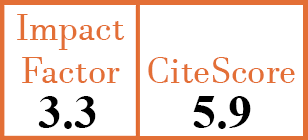Full Papers
Comparison of indirect immunofluorescence and line immunoassay for autoantibody detection
Y.L. Jeon, M.H. Kim, W.I. Lee, S.Y. Kang
CER5379
2013 Vol.31, N°1
PI 0084, PF 0090
Full Papers
Free to view
(click on article PDF icon to read the article)
PMID: 23043859 [PubMed]
Received: 12/01/2012
Accepted : 19/04/2012
In Press: 03/10/2012
Published: 28/01/2013
Abstract
OBJECTIVES:
The aim of the present paper is to evaluate the diagnostic performance of indirect immunofluorescence (IIF) and line immunoassay (LIA) for autoantibody (autoAb) detection and provide sufficient information to interpret the results of autoAb tests.
METHODS:
The study included 1,052 patients for whom IIF and LIA tests had been performed simultaneously for a systemic autoimmune disease work-up. All patients were divided into either the systemic autoimmune group or non-autoimmune group, and the systemic autoimmune group was further divided into systemic lupus erythematosus (SLE), rheumatoid arthritis (RA), Sjögren`s syndrome, systemic sclerosis (SSc), and dermatomyositis/polymyositis (DM/PM). The diagnostic performance of IIF and LIA was analysed according to the distribution of IIF patterns and autoAbs identified by LIA.
RESULTS:
The overall sensitivity/specificity of IIF and LIA for systemic autoimmune disease was 63.5%/80.3% and 66.1%/83.2%, respectively. IIF showed higher sensitivity for SLE than LIA, but the sensitivity of LIA was higher for Sjögren`s syndrome and DM/PM. The speckled pattern was the most commonly observed pattern in systemic autoimmune diseases with the exception of SSc. In the majority of systemic autoimmune diseases and their various IIF patterns, both anti-Ro-52 and anti-SS-A were the most prevalent autoAbs. In addition, a majority of the systemic autoimmune diseases showed specific dominant positive patterns or a combination of IIF and LIA results that were disease specific.
CONCLUSIONS:
Utilising both methods together not only increased the sensitivity in most cases but also provided more information from the combination of results, augmenting their interpretation with the advantage of simultaneous identification of autoAbs.


